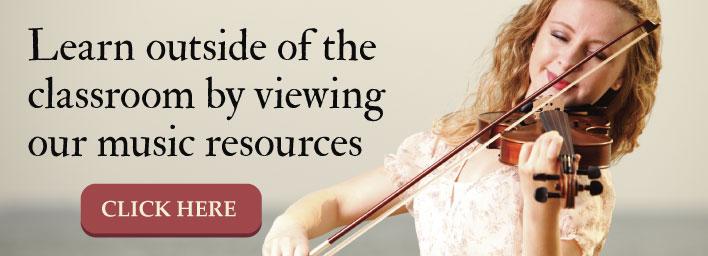How Teachers Can Help Girls Advance In Music Education


A music education provides an incredible amount of benefits. In addition to developing heightened sensory perception, music training builds brain matter and forges connections that last for a lifetime. Moreover, recent studies have shown that students who participate in music education during school years display greater retention, comprehension, and performance in academic subjects like reading and math. Yet, even with all of the evidence that supports learning to play a musical instrument, many girls shy away from band, orchestra, and other musical pursuits.
Despite great strides in education and outreach programs, girls are often ambivalent about expressing themselves through music and other “spotlight” activities. Cultural influences on television and magazines place an inordinate amount of emphasis on personal appearance and actions that downplay unique characteristics. And while many parents of school age girls would be happy to support their daughter’s desire to expand her extra-curricular activities, peer pressure is typically a deciding factor and many girls simply don’t make the request.
Even for those who are enrolled in music education, they face challenges that their male peers do not. For example, many individuals have preconceived notions about masculine and feminine instruments. Boys don’t usually choose the flute, and girls rarely decide to learn how to play trombone or double bass. However, as an educator, you can help the girls in your class advance their music education and develop methods for attracting more female interest in music training. It just requires a bit of directed effort on your part. These ideas can help you get started.
Music Types and Styles
Our culture tends to assign gender roles to all sorts of pursuits, and the same is true for music. According to Ruth Wright, author of Sociology and Music Education, “the power of musical delineations [associating certain styles with certain gender, culture, religion, class, etc.] is such that it can override even the best of intentions on the part of teachers.” However, rather than trying to overcome those associations, teachers can use them to encourage girl students.
For example, you can reach your students by embracing different styles of music. Integrating popular songs into your curriculum is a great method, but you should also explore music from different cultures around the world. While ‘Tammy’ might struggle with Handel, it may be that a current Carrie Underwood track would have the power to inspire her to reach new levels. Or, perhaps ‘Suzie’ doesn’t show real interest in any of your current curriculum and seems board with every piece, but would be energized by exploring the traditional Carnatic music of India.
Introducing new types and styles of music to the girls in your class will help them advance their skills by firing their imaginations.
Group Activities
Another method that you can use to help your girls advance their music education involves orchestrating group activities that fulfill their natural desire to socialize. The activity doesn’t necessarily need to be about playing music, you can develop themes that revolve around music education. Some ideas include:
- Form a small group for the purpose of creating an original composition. Noteflight is a fantastic online tool that simplifies the process and makes it easy to compose, edit, and print music. There is even a Noteflight Learn option specifically designed for music educators. The subscription cost is extremely reasonable—less than $80 per year for 10 students, and only one dollar each to include additional students—and indeed, all of your students will benefit from this tool.
- Institute monthly jam competitions. Depending on the size of your classes, pick 3-4 girls and 3-4 boys each month to participate (and you can schedule this activity to allow each student to participate at least once or twice per year). Each team should be given at least one day each week to practice together, apart from the regular class. After one month, the two groups can compete in front of the rest of the class to determine the winner. You can make this activity really fun by offering small prizes for the winning group and outlining specific ways to judge the performance.
- Tailoring extra credit assignments and homework tasks toward the student’s interest is another great idea. You can have students pick their favorite musician and deliver a short presentation about the artist. Be sure to allow your girls to choose anyone even remotely related to the topic, throughout history. By learning about the struggles and triumphs of another, your girls may discover their own calling, but at the very least, they’ll advanced their music knowledge.
Teachers can help girls advance in their music education by developing creative ways to inspire and support them. And the lifelong benefits the students will receive will provide a solid foundation for their future endeavors.


